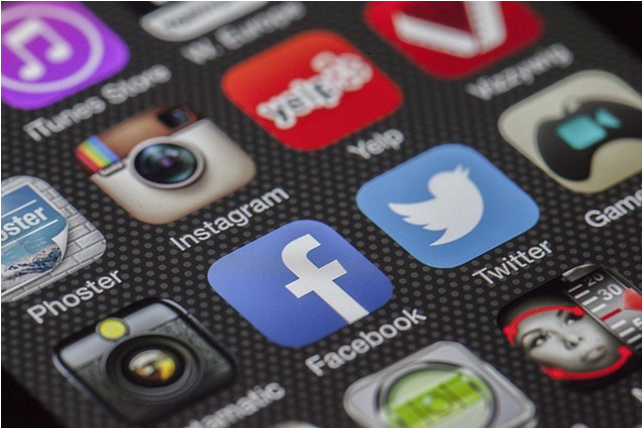Social Media Use and Increased Risk for Body Dissatisfaction and Disordered Eating

The link between mass media and the development of body dissatisfaction, drive for thinness, and disordered eating has been a topic of research in the eating disorder literature for years and years. These studies typically focused on television, movies, and magazines. Findings indicated that greater consumption of media predicted eating disorder symptomotology; increased preoccupation with beauty, thinness, and food; greater objectification of women’s bodies; decreased self-esteem; and increased body dissatisfaction. Through the lens of modern media, thinness has become associated with health, self-control, and success. The food, diet, fitness, fashion, and plastic surgery industries fuel these beliefs and their profits continue to rise. But, at what expense? Women and girls are left feeling inadequate when their bodies fail to live up to the beauty ideals portrayed across mass media. For those with other psychological and environmental risk factors, these messages are internalized and often supported socially, further increasing the likelihood of a true eating disorder developing.
In more recent years, there has been a substantial change in our culture regarding media consumption, with teenagers and young adults spending more and more time online, especially on social media sites. Subsequently, the research has shifted focus in order to try and understand what impact social media might have on body image and the development of eating disorders. A 2015 study found that spending more time on Facebook or reading magazines was associated with greater self-objectification of young women. However, young women read magazines far less frequently than they visited Facebook. While on Facebook, users tended to compare their appearance more frequently to their peers and their own previously posted images, rather than celebrities or family members. This certainly suggests a shift from comparisons to models and actresses who embody the thin ideal in magazines, on television, or in movies. However, this is not actually a positive change as most photos posted online are carefully selected and often modified in order to present a positive or idealized image. Often multiple photos are taken from various angles, filters are applied, and photo editing software can be utilized to make adjustments or corrections. When the finished product is posted, the goal is often for the photo to appear “effortless” as if spontaneously taken in the midst of the subject’s fabulous life. Furthermore, because comparisons are being made to peers or similar others, it is easy to buy in to the fantasy that these are snapshots of reality rather than carefully crafted and curated images no different from those posted by celebrities. This only continues the cycle of exposure to unrealistic, idealized expectations for appearance.
Another recent study found that more time on Facebook was related to more frequent body and weight comparisons, more attention being paid to the physical appearance of others, and more negative feelings about one’s own body. Essentially, those who spent more time on Facebook had poorer body image. In this same study, for the women who expressed a desire to lose weight, more time on Facebook was correlated with more disordered eating symptoms. Again, we are seeing that these upward comparisons leave many social media consumers feeling “less than.” Additional research published in 2016 found that those study participants who spent the most time on social media (including Facebook, YouTube, Google Plus, Instagram, Snapchat, Reddit, Tumblr, Pinterest, Vine, and LinkedIn) throughout the day had 2.2 times the risk of reporting eating and body image concerns compared to peers who spent less time on social media. In light of this finding, we must also consider that certain people who have eating and body image concerns may also be seeking a shared identity or sense of community on social media. Aside from the highly publicized “pro-ana” websites or blogs that support and encourage anorexic or eating disordered beliefs and behaviors, a new wave of “thinspo” and “fitspo” sites, images, and blogs are flooding social media with messages that if you would only work harder, diet better, and exercise more, you too could have the perfect body and all the happiness and success that comes with it. Since these images and sites are often created by “everyday” people, they again seem far more realistic and attainable than those of models or celebrities.
Parents must be aware of these influences when making decisions about their children’s access to social media sites. This can be quite challenging in today’s world where every kid has a smartphone with unlimited access to Snapchat, Instagram, Twitter, and whatever other current and trending form of social media comes along. Many parents are not monitoring and limiting access; and those who are may feel they are losing the battle against their tech-savvy kids who find ways around the imposed restrictions. But we must remember that this is a battle worth fighting, especially for parents of girls (or boys) who are struggling with poor self-esteem, negative body-image, or problematic eating patterns. The research seems to be showing us that for those girls and young women who are at risk, social media may only exacerbate the risk factors for developing eating disorders.
If you need guidance around setting limits around social media use, if your child is struggling with poor self-esteem or body image concerns, if your child’s eating habits have changed suddenly, or if you are worried about your child developing an eating disorder, seek help immediately. Do not wait. Eating disorders are chronic and highly dangerous conditions that only become more difficult to treat as the behaviors and beliefs become more engrained.